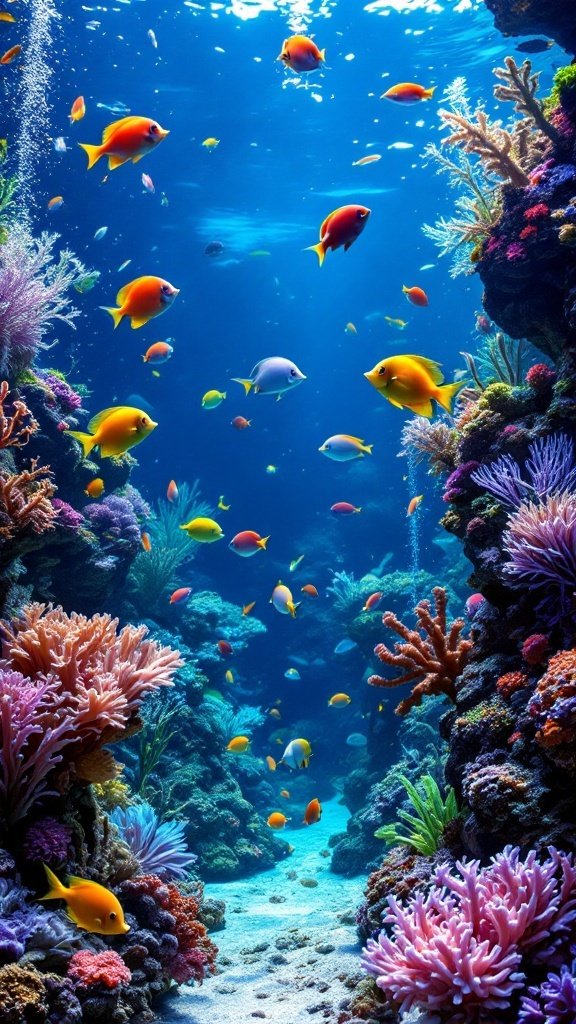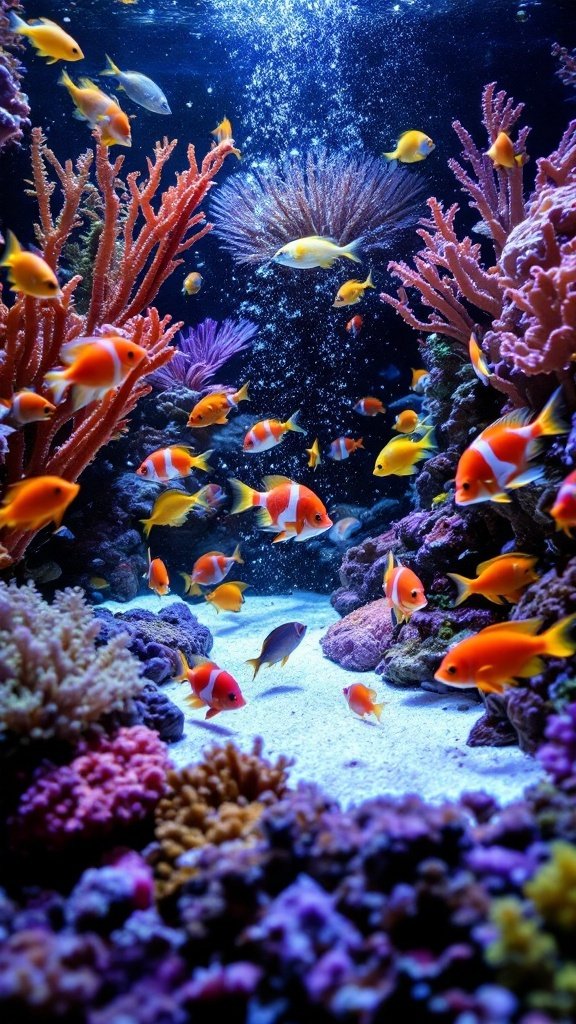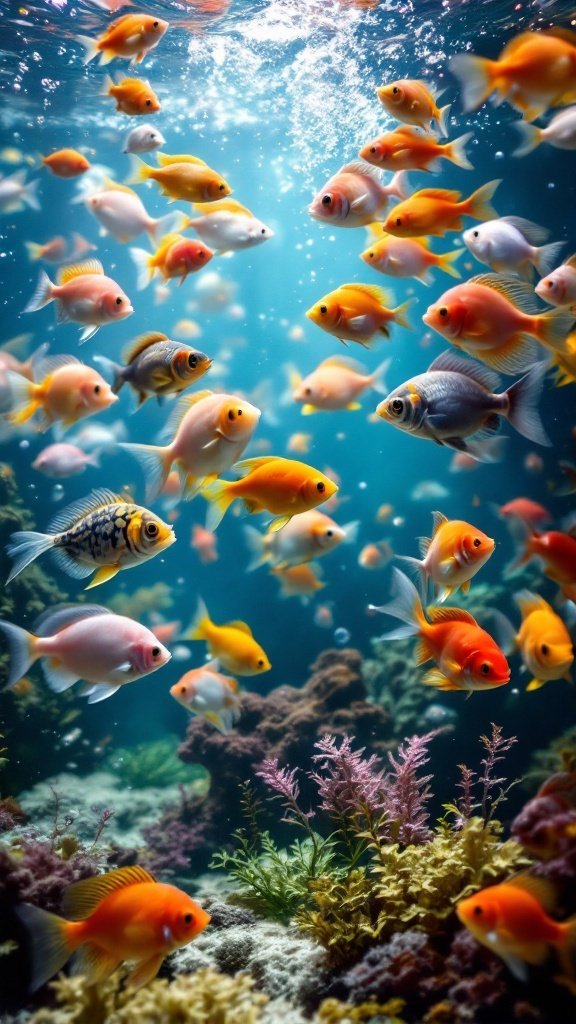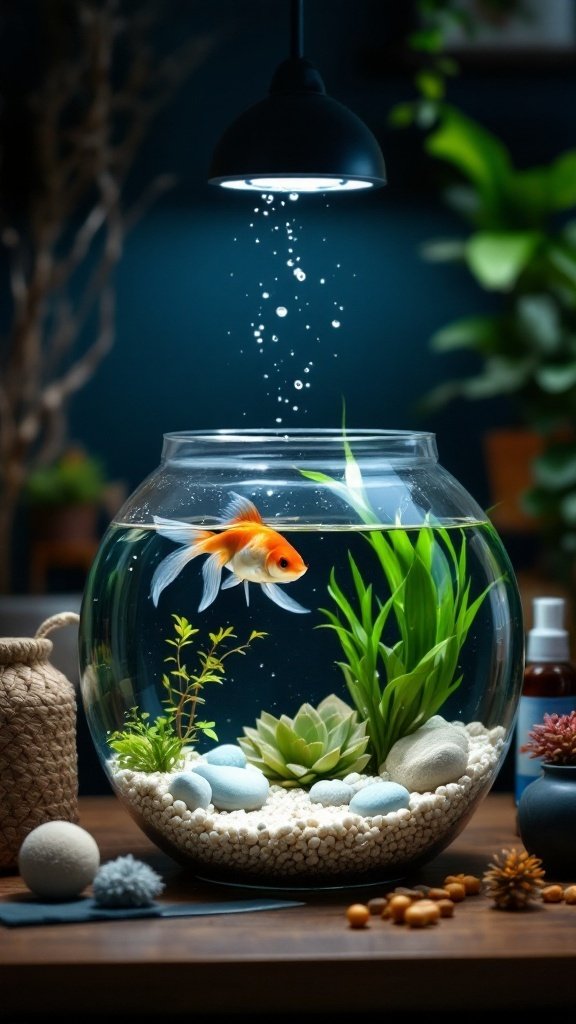
Nano Aquarium

Creating a nano fish tank involves setting up a small aquatic environment that is both manageable and aesthetically pleasing. Start by choosing a tank that holds between 5 to 20 gallons of water. Smaller tanks can be more challenging to maintain, so ensure it’s large enough for fish to thrive. Begin with the tank itself, placing it on a stable surface away from direct sunlight. Install a reliable filter to maintain water quality, and choose a heater if you’re keeping tropical fish. Add a substrate like fine gravel or sand, and decorate with rocks, plants, and ornaments that provide hiding spots. Next, fill the tank with dechlorinated water, checking temperature and pH levels to match the needs of your chosen fish species. Introduce hardy fish like bettas, tetras, or guppies, and avoid overstocking. Monitor water parameters regularly—ammonia, nitrite, and nitrate levels—perform regular water changes, and feed sparingly to avoid water contamination. With proper care, your nano tank can become a vibrant and low-maintenance aquatic ecosystem.
Aquascaped Nature Aquarium

Aquascaped nature aquariums bring a touch of the outdoors into your home, creating a peaceful, natural environment that mimics the beauty of real ecosystems. To create the perfect setup, start with the right substrate, such as fine gravel or nutrient-rich soil, to provide a solid foundation for your plants. Add aquarium rocks to create natural-looking formations, and incorporate driftwood for texture and visual appeal. Choose a variety of aquatic plants in different sizes, shapes, and colors to add depth and interest, with taller plants placed in the back and smaller ones in the front. Consider adding plants like moss, ferns, or floating species to create a diverse, layered look. Ensure your plants are compatible with the fish you plan to keep, and choose plants that thrive in the lighting conditions of your tank. With the right balance, your aquascaped aquarium will be a vibrant, living piece of nature, offering a serene and beautiful focal point in your home.
Biotope Aquarium

A biotope aquarium focuses on recreating a specific natural habitat for your fish. Begin with natural materials like driftwood and rocks to mimic the environment, and add live plants that reflect the ecosystem you’re aiming to recreate. The goal is to closely match the fish’s native environment, ensuring a more natural, comfortable space. This setup doesn’t just look beautiful—it also promotes the health and well-being of your aquatic friends by offering them a habitat they are biologically adapted to. With careful planning and attention to detail, a biotope aquarium can be both visually stunning and beneficial for your fish.
Freshwater Planted Tank

A freshwater planted tank is a beautiful way to bring nature into your home. Start with a quality substrate like nutrient-rich soil or fine gravel to support plant growth. Add a variety of aquatic plants to create a lush, vibrant environment. Choose colorful fish that complement the plants and add movement to the scene. Ensure proper lighting for both plant growth and fish health, using a suitable aquarium light. A reliable filter is essential to keep the water clean and maintain a healthy ecosystem. With these elements in place, you’ll have a thriving, natural aquatic habitat to enjoy.
Saltwater Fish-Only Tank

A saltwater fish-only tank is a vibrant way to bring the ocean into your home. Start with a sturdy aquarium and use a marine salt mix to create the right water conditions. Install a reliable filtration system to keep the water clean and maintain the health of your fish. Add an appropriate heater to keep the temperature stable for marine life. For a lively, natural look, decorate with colorful coral, rocks, and other marine ornaments to create a vibrant underwater environment. With these essentials, you’ll have a stunning saltwater tank that brings the beauty of the ocean indoors.
Community Fish Aquarium

Creating a community fish aquarium is a fun and rewarding experience. Start with a spacious tank, ideally at least 20 gallons, to give your fish plenty of room to thrive. Add a layer of gravel or sand as the substrate. Incorporate decorations like plants, rocks, and driftwood to create hiding spots and a natural environment for your fish. Choose peaceful species that get along well together, and be mindful of their specific water requirements. A good filtration system will help maintain water quality, ensuring your fish stay healthy. With the right setup, your community tank will flourish into a vibrant, harmonious underwater world.
Tropical Reef Aquarium

Setting up a tropical reef aquarium is a great way to bring vibrant marine life into your home. Begin with live rock, which provides natural filtration and a home for beneficial bacteria. Add soft and hard corals to create a colorful, thriving environment. Choose a variety of colorful, peaceful fish that complement the reef ecosystem. Ensure proper lighting to support coral growth and highlight the beauty of the tank. A reliable filtration system is essential to maintain water quality and keep everything healthy. With the right setup, your tropical reef will become a stunning and lively underwater display.
Shrimp-Only Aquarium

A shrimp-only aquarium is a fun way to enjoy these fascinating creatures. Start with a small tank, ideally 5 to 10 gallons, to create a manageable environment. Add a suitable substrate, such as fine gravel or sand, to promote healthy shrimp growth. Incorporate plants to provide hiding spots and grazing areas for the shrimp. Use a water conditioner to remove chlorine and other harmful substances, ensuring the water is safe for your shrimp. Maintain stable water conditions with a gentle filter and monitor parameters like temperature and pH. With the right setup, your shrimp tank will be a thriving, low-maintenance aquatic habitat.
Goldfish Bowl Setup

A goldfish bowl can be a charming addition to your space. To set it up, you’ll need a glass bowl, decorative gravel, water plants, and a goldfish to swim around. Choose a bowl that provides enough space for your fish to move comfortably. Add some natural water plants like moss or ferns to help maintain water quality and create a calming environment. Be sure to use water conditioner to remove chlorine and toxins, ensuring a healthy, safe home for your goldfish. Regular water changes and proper maintenance will keep your goldfish thriving in its new aquatic haven.